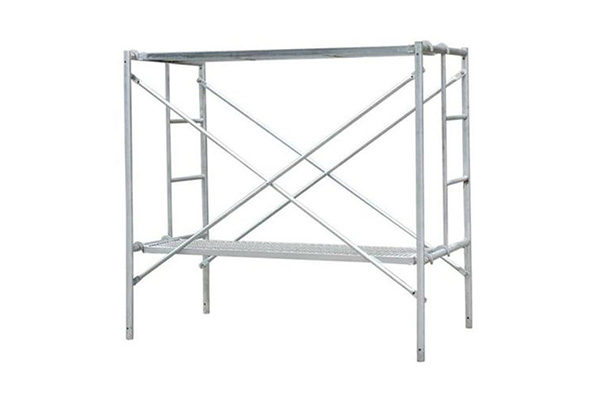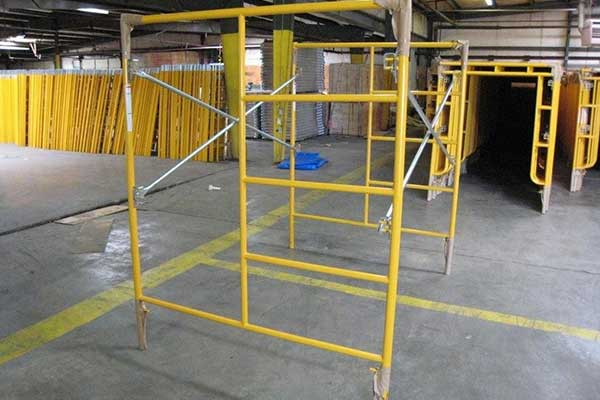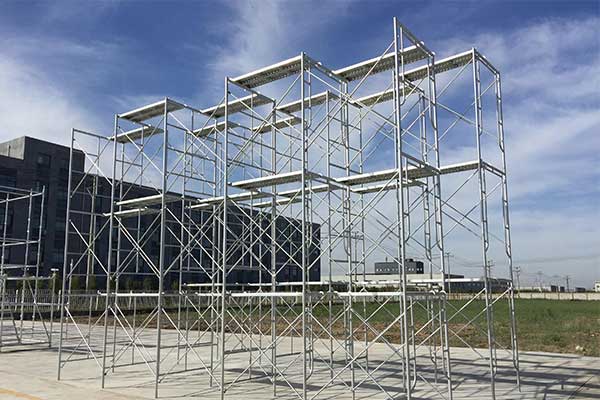Fabricated Frame Scaffold: A Comprehensive Guide
When it comes to construction, safety and efficiency are paramount. One of the most essential tools used to ensure both are achieved is scaffolding. Among the various types of scaffolds, fabricated frame scaffolding is one of the most popular and widely used in both residential and commercial construction projects.

What is Fabricated Frame Scaffold?
A fabricated frame scaffold is a type of modular scaffolding made up of pre-manufactured frames and components that are designed for easy assembly and disassembly. These frames are typically made from steel or aluminum and come in various sizes to meet different construction needs. The key advantage of fabricated frame scaffolds is their ability to offer quick setup and high load-bearing capacities, making them suitable for a wide range of applications.
Fabricated frame scaffolds are commonly used for tasks such as:
- Painting and exterior work
- Building maintenance and repairs
- Installing windows, facades, and other exterior elements
- High-rise construction and multi-story buildings

Key Components of Fabricated Frame Scaffolds:
- Frames: The main structural units of the scaffold, typically made of steel or aluminum.
- Cross Braces: These are used to stabilize the structure and prevent lateral movement.
- Planks: Horizontal platforms where workers stand. These are placed across the scaffold’s frame to form a solid working surface.
- Base Plates: Placed at the bottom of the scaffold legs, they help distribute the load and ensure stability on uneven ground.
Benefits of Using Fabricated Frame Scaffolds
1. Speed and Efficiency
One of the major advantages of fabricated frame scaffolds is their ease of assembly and disassembly. Unlike traditional scaffolds, which may require on-site fabrication, fabricated frame scaffolds come pre-built and are ready to be installed immediately. This saves valuable time, especially on large-scale construction sites where speed is crucial.
2. Safety
Fabricated frame scaffolds offer enhanced safety for workers, as they are designed to be sturdy and resistant to weathering and wear. The pre-fabrication process ensures that all parts meet the required safety standards, reducing the chances of human error during assembly. With proper bracing and securing, fabricated frame scaffolds provide a stable platform, minimizing the risk of accidents and injuries.
3. Cost-Effective
Since fabricated frame scaffolds are designed to be used repeatedly on various projects, they offer excellent value for money. Their durability means they can withstand multiple uses without the need for frequent repairs or replacements, reducing long-term costs for contractors.
4. Versatility
Fabricated frame scaffolds are highly versatile and can be used for a wide range of construction projects, from residential buildings to commercial structures. Whether it’s for exterior maintenance, painting, or new construction, these scaffolds can be easily adapted to different heights and configurations, offering maximum flexibility.
5. Durability
Made from high-quality materials like steel and aluminum, fabricated frame scaffolds are designed to withstand harsh environmental conditions. These materials are resistant to corrosion, making them suitable for use in both indoor and outdoor settings. Additionally, they are able to bear heavy loads, which makes them ideal for tasks that require lifting or working with heavy equipment.

Installation of Fabricated Frame Scaffolds
Installing fabricated frame scaffolding is relatively straightforward, but it’s important to follow proper procedures to ensure safety and compliance with local regulations. Here’s a general guide to setting up a fabricated frame scaffold:
- Prepare the Ground: Before starting the installation, make sure the ground is level and stable. If necessary, use base plates to distribute the weight of the scaffold and prevent it from sinking into the ground.
- Assemble the Frames: Begin by assembling the base frame, securing the cross braces, and ensuring each frame is level. The frames should be locked in place securely to avoid any instability.
- Add Additional Frames: Continue adding frames vertically, securing each layer with braces to maintain structural integrity. It’s crucial to ensure that all joints are tightly connected to avoid any movement during use.
- Install Platforms and Guardrails: Once the frame is complete, install the scaffold planks or platforms at the required height. Add guardrails and toe boards to prevent accidental falls and ensure the safety of workers.
- Check for Compliance: After installation, check the scaffold to ensure it meets safety standards and local regulations. Inspect the scaffold for any signs of weakness, and make sure all components are in good condition.

Maintenance and Inspection of Fabricated Frame Scaffolds
Regular maintenance and inspections are essential to ensure the longevity and safety of fabricated frame scaffolds. Periodic checks should be carried out to assess the condition of the frames, planks, and safety components. Look for signs of wear, corrosion, or damage, and replace any parts that are no longer safe to use. Additionally, make sure the scaffold is stable and secure, especially after any major weather events or after the scaffold has been moved.
How to Choose the Right Fabricated Frame Scaffold
Choosing the right fabricated frame scaffold for your project depends on several factors. Here are some key considerations:
- Project Size: Ensure the scaffold system can accommodate the scale of your project. Larger projects may require multiple frames and additional accessories.
- Weight Capacity: Always consider the weight load the scaffold will need to support. Make sure the frame and planks can handle the necessary weight.
- Environment: Consider the weather conditions in which the scaffold will be used. Some materials, like aluminum, may be more suitable for certain environments than others.
- Compliance: Make sure that the scaffold system complies with local safety and construction regulations. Look for certification marks or quality assurance guarantees.
Conclusion
Fabricated frame scaffolds have become an essential part of modern construction, offering a perfect blend of safety, efficiency, and cost-effectiveness. Their quick assembly, stability, and durability make them an ideal choice for a wide range of construction tasks, from building and maintenance to industrial applications. When choosing a fabricated frame scaffold, it’s important to consider factors like project size, weight capacity, and compliance with safety standards to ensure the best results for your project.
